THe Truth Is Rarely Pure And Never Simple -Oscar Wilde
For the past few years, the great debate in the stuffy world of wine has been alcohol. It is a topic that people feel passionately about. It is also one of those rare topics in the discussion of wine that has actual concrete parameters that can be discussed. Thus it is a great thing to base symposiums and discussion groups around.
I for one could care less what the alcohol percentage is of a wine. Either I enjoy it or I don't. But the number is printed on the label and gives ammunition for all with a bone to pick. The most common bone being picked is that high alcohol wines are a stylistic decision made by lazy winemakers. People who dislike high alcohol wines claim it as evidence as an attempt to make big flabby overripe wines to trick some critic into giving out a big numerical score to the wine.
Like I have discussed earlier in this blog, I pick mainly by using my natural senses. I like to look at the chemistry just so I know what I'm getting myself into as far as the ferment goes. But the decision as to is the fruit ready to come off the vine, I trust mainly my sense of taste, touch, and sight while walking the vineyard. (If I am smelling or hearing the grapes on the vine, that is an indication that I should have picked yesterday.)
One of the big reasons I have decided to swing my decision making so far into one camp is due to the fact I make wine in Paso Robles. This is a unique place making unique wines. If there is a textbook out there that explains making wine in Paso, I haven't read it yet. Most accepted thought on winemaking was established elsewhere, thus I always take lessons from afar with a grain of salt. For a case in point, let's look at the 2011 harvest.
Things are all over the map this year. Early ripeners are developing late and vice versa. I picked some Tempranillo last week that was 23.8 Brix and 3.95 pH. Sure that's just the low acid nature of Tempranillo, but even though it will end up being around just 13% alcohol, the fruit was plenty ripe and I didn't want to let it hang another day. Then this weekend we picked some classic Paso Robles fruit.
Our Kate's Vineyard Zinfandel is always one of my favorite picks of the year. The vines are not overly vigorous for Zin, and produce amazingly complex wines. One of the main reasons for the complexity is high acid and tannin in the must even when pushed for ripeness. Here is the brix measurement after a 4 day cold soak.
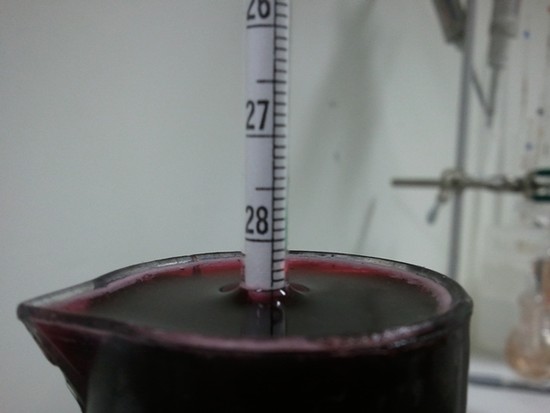
28.5! There I go chasing big scores with my big lazy overripe jammy Zin that is going to taste like some Virgin Islands cocktail. If I was making proper wine, I would be pushing for balance, restraint, nuance, complexity. I would have picked it 3 weeks ago at a respectable 25 brix. Instead I'm just going for power to win over some critic who is never going to taste this wine anyway.
Well before we start jumping to conclusions; let's look at some more evidence. I can't have you virtually taste this, so I can't prove that this wine is going to be incredible. But check out this photo:
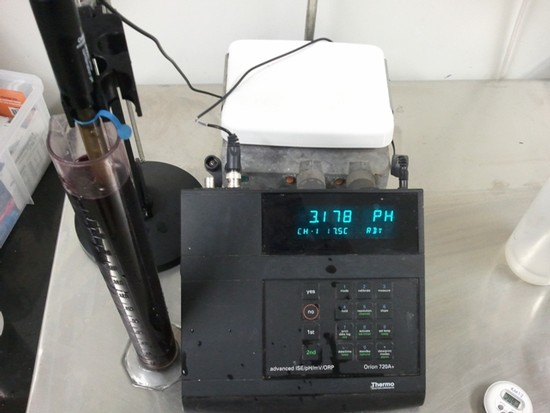
Wait, what? 3.178 pH. My favorite was the sample I took 2 weeks ago that was 26.2 Brix with a 2.84 pH. So there I go, trying to impress the euro snobs with my austere acidic wines that will take years of ageing to be drinkable.
So who am I making this wine for? Well, I'm making it for the people who have tasted our Zin and love it. Sure these numbers are off kilter, but this must tastes right it its own peculiar way. Big and ripe but with amazing backbone, color and tannin to bring everything into proper balance. Our 2007 Zin had very similar chemistry and it sold out in about 3 weeks. If I could get the numbers to be more traditional, but had to sacrifice what this must tastes like, I would never go for that.
Next time someone wants to look at the % number on the wine label and pontificate about the winemaker's intention, tell them this little story. This world is not always so black and white.
As a winery grows, the most pressing concern on the wine making side is how to expand production without loss of quality. The key reason quality can differ as growth takes place is the choice of new vineyards. In that spirit, it has taken 3 years of patience to find another Chardonnay vineyard here in Paso Robles that we felt comfortable with. The 2011 vintage marks our fist attempt to get to know this place. (People commonly claim that the French word Terroir has no translation to English, I disagree. To me it means place, as in "It's almost as if that building is of this place." Writing this blog has reminded me that the English language can be as beautiful as any if used with consideration.)
The only comparison I can find to this type of nervous excitement is a first date. When all possibilities are still available, your dreams framing what could be.
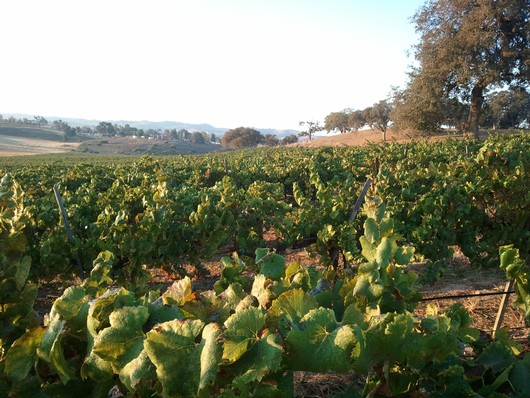
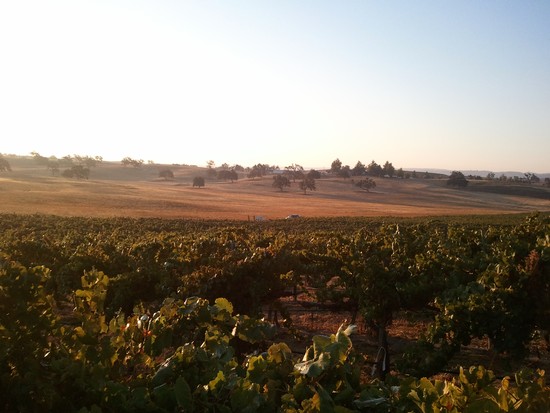
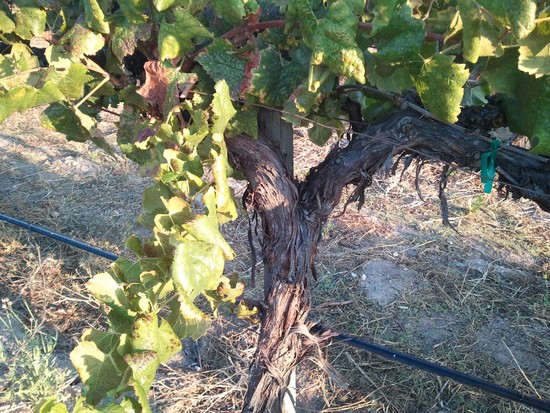
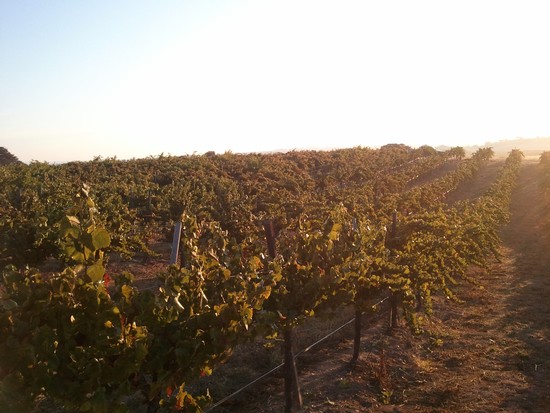
I firmly believe there is single most important job for a winemaker, deciding when to pick the fruit. The best a wine will ever be is the moment you pick it. All you can hope to accomplish is to lessen how much it degrades. The techniques you read about in the produciton notes of your favorite wine cannot improve the wine, they represent only our best efforts to fully capture and express what is within the fruit. Since determening the pick is such an important task, I'm surprised how little attention it gets.

The how and why of picking dates is different for each winemaker. The separate routes taken to this end represent most of what is the underlying character of the wines produced by different winemakers. The routes are plentiful due to the mass of information available and the varied interpretations of that information.
You can break up most of the information into two rough categories, vineyard observation and lab data. The safe thing for the modern winemaker to say is that both forms of information are equals. But from what I see, most people lean towards one or the other. On one end you have the winemaker who reads only spreadsheet charts and can track the exact optimal moment of balanced sugar, acid, polysaccharides, phenolics, anthocyanins, etc. If you have 5,000 acres of fruit you are responsible for, it is pretty impossible to go "walk the vineyard" and decide how it's tasting. On the other extreme you have the winemaker who eats the fruit in the vineyard and looks at the vine for changes in shoots, leaves and stems. This really works best when you have a single vine in your backyard. So where you ask do I find myself in this continuum?
Being an organic chemist by training and trade, one would expect me to be most smitten with the data avalanche of the well-stocked winery lab. At first, that made most sense to me. But the more harvests I undertake, the more and more the vineyard and tasting the fruit have started to dominate my decision-making. The main reason I have made this change is a newfound belief that this decision is what we humans are designed to do.
When I was working in biotech as a multi-step organic bench chemist, most of the PhD's working there were Soviet trained. With this Soviet training came some "old school" techniques. The PhD I worked most closely with often made decisions about the success or failure of a reaction base on smell. The sane thing to do is to run a sample in the GCMS. But this takes about 20 minutes start to finish in a busy lab, and smelling the reaction is instant to the trained chemist nose. In fact, the history of organic chemistry pre-dates the analytical tools of the lab because early chemists could look at, listen to, feel, smell and taste their reactions. These senses of ours amazingly powerful, they easily rival large instruments costing hundreds of thousands of dollars. And they are never more powerful then when being used for their actual purpose.
The tasting of ripening fruit is an example of one of those actual purposes. Think about your sense of taste for second. Why should you want to taste things, what's the point? Well, first and foremost it immediately tells you if something is good or bad to eat or drink. If you could not taste salt, how could you tell if water was fresh and drinkable, or like the vast majority of water available to you, salty and dangerous. Without sour, bitter, sweet and Umami (wait, what? I think I missed a memo.) how could you tell if fruit is going to be a nutritious snack or a belly ache waiting to happen? This to me is the whole point of our ability to taste, so we know when fruit is good to eat. Lucky me, to have such an amazing tool to help me with my job.
The whole process is incredible to me. The vine wants to spread its seeds around. It decides to surround its seeds in a tasty treat so that animals will eat them and the seed will travel with them. The danger for the plant is the animal wanting to eat the fruit before the seed is ready. So while the seed matures, the fruit needs to taste unpleasant to the animal. Thus the young grape is extremely sour and bitter with very little sweetness. Once the seed is ready though, the fruit quickly loses bitterness and acidic flavors and becomes more and more sweet. At a certain point there is a perfect balance that may not be the exact best moment to eat the grapes, but is the exact best moment to make perfectly balanced wine.
Standing in the vineyard, eating grapes in the morning, the tuned winemaker sense machine can accurately determine brix and pH along with skin tannin and color and many other chemicals. It is a fun test to make a best guess as to the pH and Brix when tasting fresh must. The winemakers I learned from would have no problem producing a number that was within 1 Brix of a hydrometer and 0.2 pH of a probe.
There are even some things that only tasting the fruit can give you. Like tasting the difference between crisp and mushy watermelon, the consistency of the pulp is one of those vital things that I have never seen determined in a lab. (Note to self, build a little spring tension device that produces a "firmness" number, sell to wine labs, retire.) Things like cane and stem lignifications and leaf color change can only be determined by actually visiting the vine. I cannot see how it is possible to be absolutely confident you are picking the fruit at an optimal moment without spending time in the vineyard using your senses. Because really, that is what they are there for.
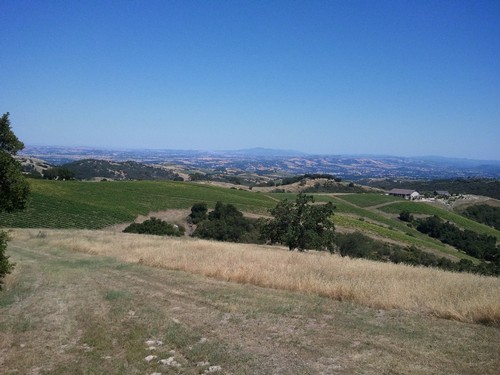
Oh my, summer has finally decided to show up. After all the craziness, like rain the first week of June, it now feels like Paso. After the cool wet winter and spring, the horrendous frosts, all the what nots and who's fors in the vineyard, things are right where they should be. June 21st and the fruit is set on everything but a couple sections of Mourvedre and Cab. The heat that is hitting right now is like flipping the turbo on; the vines seem to be just exploding. It's exciting to see and the daily morning walks in the vineyard have begun.
I firmly believe that the winemaker needs to spend as much time actually in the vineyard as possible. That to me is the whole purpose of having the vineyard and the winery on the same property. So, from this day forth, my assistant winemaker and I (and Abbie and Salty) will spend the first part of every day walking the rows. Seeing the daily changes is the only way to really put oneself on the same time cycle as the plants. Yeah, you can sit in an office and start reading number off of various probes and data collected by others. But that doesn't let you understand the vintage. To feel the dew, fog, sun, soil and wind the same way the plants do. This is where the understanding comes from. This is where the plan comes from. This is where the great wine comes from.
One of the challenges of working with a newly producing vineyard is that is takes you quite a few vintages to figure out your barrel program. Winemakers will all have favorite barrels that are kind of their go to options, but until you get to really know the fruit the vineyard is producing, it's mainly guess work. Different barrels will add different features to the overall experience of the wine. Suffice to say, some barrels you smell and taste in the wine. Other barrels you only feel. And only developing that first hand knowledge of what the fruit from a vineyard needs will allow you to have a successful barrel program.
To begin this post in another way, experimentation with barrels is still the name of the game here at Calcareous. A barrel that I brought in for the first time in 2010 was Keystone Cooperage. I had asked around few other winemakers in Paso and gotten positive feedback about Keystone. Solid barrel for Cabs, Syrahs, and Zins was the general consensus. That can be a bit scary though because those are the big boy wines and are capable of hiding barrel character. I often talk about how early American coopers made oak barrels for things like salt pork and whiskey. Nobody cares if there's a bit of woody flavor in those things. I mean, throw down a shot of Old Potrero and impress the crowd by saying "Oh that's really smooth but the oak finish really overpowers there." Um, probably not going to happen. You need all the smoke and wood possible to stand up to the huge flavors in whiskey, so the barrels can be monsters. Thus American barrels had a bad reputation because Chardonnay can, at times, be a bit more restrained then rye. Luckily things have changed.
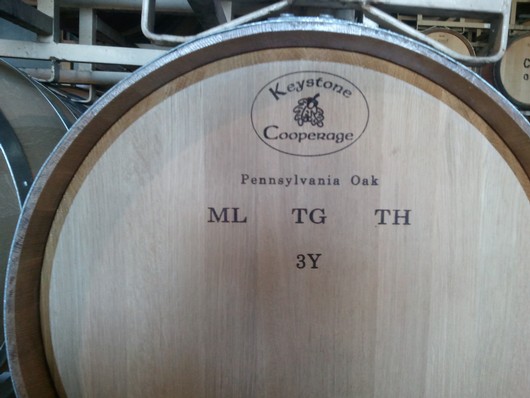
To prove the point, let's decipher all the letters and numbers on that barrel head. First the cooperage stamp is rather self explanatory. Nice little oak leaf and acorn design there I must say. Next, most American barrels will now tell you where trees were grown. The climate that the forrest grows in determines the grain structure of the wood. Warm regions produce faster growth and wider grain. Cold forests have shorter growing seasons thus tighter grain. And when it come to American White Oak, there is a big range of where it grows.

From East Texas to Maine the great Quercus alba forest covers nearly a third of the country. Keystone is Pennsylvania only, thus you generally get medium to tight grain wood in their barrels. That is what the "TG" stands for, "tight grain". Not to produce a full tome on oak here, but generally the tighter the grain, the slower the extraction from the barrel will be.
The letters "ML" indicate the toasting level. In this case "ML" means "medium long". I requested this toasting style which is a lower heat for a longer time. A medium toast will give you more oak structure instead of the smoke and caramel you get from the toasting process. Again, that is a decision you need to make based on what you feel the wine from your vineyard needs. Also, when working with a barrel for the first time, I like to try and taste the wood not the toast. The toast can be fined tuned, the wood is the wood. The longer time of the toast gives you a deeper penetration into the wood. Thus if the wine is in the barrel for 18 months, the toast is deep enough to prevent the wine from interacting with un-toasted wood. The "TH" is another toasting indicator, meaning "toasted heads" The heads account for a significant amount of the surface area of the barrel, thus toasting the head as well is an important step if you want to control the impact of the barrel.
Lastly is "3Y" which means "three years" of wood aging. Once the trees get turned into stave logs at the mill, they sit outside. Two years is the basic time your average cooperage will allow the wood to age outside. The longer the wood is exposed to the sun, wind and rain, the milder the "oakiness" becomes. This is one of those "aha" things the French had to explain about how to make barrels for wine instead of whaling ship rum. Thus, with American oak that can be a bit more powerful than French oak, I prefer a full 3 years of weathering. It costs a bit more, because the stave mill needs to have the oak sitting around for an extra year before selling it, but for me it is worth it.
The last thing about these barrels that you can't see here is that they are a slightly larger size. I order these barrels in the 265 liter size. The normal French barrel size is between 225/228 liters depending on the shape. By having a larger barrel, you decrease the surface area to volume ratio, thus producing a situation with less extraction.
This month, finishing my initial tasting trials for these barrels, I have been pleased. I think Keystone will be with us for a while. If you stop by the winery, look me up and you can taste for yourself.
In the fall, the leaves on the vines turn their beautiful colors and eventually fall off. The vines themselves enter a dormant state, mirroring the farmers and vintners who need a long winter's nap to recover from harvest.
Eventually spring rears its wonderful head bringing warmth and sunshine to wake everything up again. The buds on the pruned vines begin to break open and the great cycle of the vintage begins. This week at the end of March marks that beginning for the 2011 vintage.
Now either in tasting notes you have read, or at some winemaker's speech you have survived, you may have heard that not all grapes ripen at the same time. Here at Calcareous, some grapes we pick at the end of August and some we pick in the middle of November. And contrary to what some might say, that waiting until November is not some ploy to get the fruit "over ripe" to make big jammy Paso wine. No, the fact is, each variety planted here marches to its own beat when determining the timing of when its fruit will be ready. Some vines take their own sweet time, and no other time of year shows this as clearly as bud break.
Every year, the first grape picked off the Calcareous vineyard is the Chardonnay. Here is what that Chardy looks like today.

Hope and life spring eternal, literally! An exclamation because you don't get to be literal all that much in life these days. Now of course, the constant worry of a freeze that could damage these fragile buds is ever present. Well, not actually. Here is a tip to any of you out there that are looking to plant a vineyard for your future award winning estate winery. Plant on a steep hill. Oh sure, it makes working the vineyard feel like a constant mountain hike, you need crawler tractors, and irrigation and ripening are irregular. But the big plus, we have never had a frost problem here*. So these buds will soon be leaves, stems, and flowers.
Now, why don't we walk 75 yards due east and see what is happening with the Mourvedre.
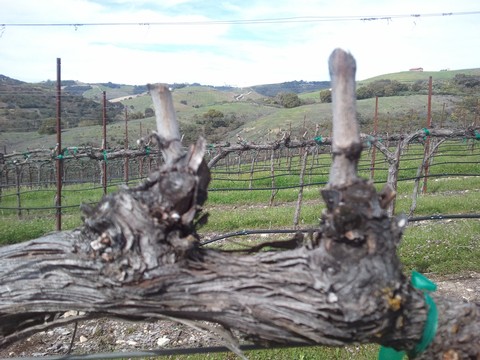
Um, not much. Mourvedre is always in a race with the Lloyd Block Cab Sauv to see who gets picked last. And as you can see here, budding is still a couple weeks away. Not a hint of green anywhere in the whole block. The Mourvedre vines are weeks behind the Chardonnay in general life cycle. Thus, the fruit will ripen weeks later. Sure this is a bit of a simplification of things, but it is always interesting to me see the order of bud break as it outlines my general planning of harvest.
You can start to put together a flow chart in your mind of what fruit will go into what fermenters. There are dreams about various co-ferments from fruit that ripens at the same time. Last year, the top of a section of Syrah and the bottom of the Merlot broke the same week. So I thought, why not, during harvest a small 1 ton co-ferment of the two. If you ever visit in the next year, you can taste that experiment and see what you think. I for one am in love as these two maligned beauties work wonders together. Things like that won't happen every year, so by paying attention to the vineyard now, you can prepare for the little bits of magic as they may occur.
Finally, an aside for those who read my post on pruning. I mentioned that the ideal goal is to get two buds from each spur position. This way you get the low yields and concentrated fruit you hope for. I also mentioned that this two bud thing is a dream. Sometimes, like in the above Chardonnay photo, you get a perfect two buds and all is well. Sadly, a lot of the time things look like this Malbec here.
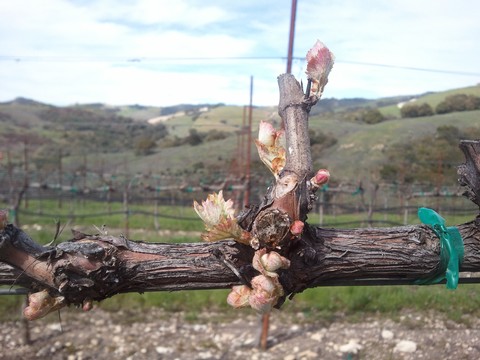
A solid 8 buds there, and that is only the one side. This means that we will have to go back through in the next month, and pull off all the extra shoots. So for those keeping count, this will be the second time this year each vine will be visited and adjusted by hand. There will be many more of these visits over the next 6-7 months. Hopefully I'll write a little post about each of them.
*Please Snow Miser, I am not challenging you. Please stay down in your cold, yet comfortable low lying areas.
One of the things that connects me most to winemaking at a small family owned winery like Calcareous is the handmade nature of the product. All work done on the vines is done by hand. The fruit is hand picked. And in the winery during crush, the wine making here is defintely hands on. Which all comes to mind this time of year when meeting with the salespeople and coopers from the cooperages that make the barrels we use. Although for simplicity reasons we often categorize the oak used in wine making as French, American or European, reality is much more interesting than that. After all, do we just lump in all grapes as being either French, Spanish or Italian?
Making barrels is just as much an ancient artisian craft as wine making. Each barrel is hand made and toasted by some one with oak staves, steel hoops, a hammer, and a fire pit in the ground. The way the flavors of the barrel integrate with the wine and the life the wine lives while aging are much more influenced by the person who made that barrel than by just where the tree was grown. In recent years, the barrels of Tonnellerie Meyrieux have become one of my favorites and used in both my Rhone and Bordeaux programs. There might even be an expansion into the world of Pinot Noir.
If you are ever on a cellar tour and see this logo, you can impress the tour leader and fellow "tourists" (is that the proper word?) with the question "So how do you feel the powerful Meyrieux (pronounced May-Roo) barrels impact the wines made here?"
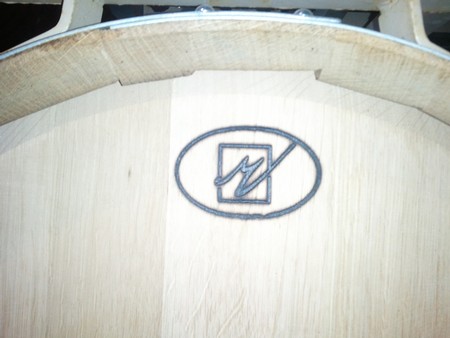
Powerful is the key word here. From 2007-2009 these barrels were only allowed to interact with Syrah, the power king of West Side Paso Robles. The method used for toasting these barrels produced wonderful flavors that softness to powerful wines like no other barrel I have ever used. As you can see here, the "House Toast", basically the toast the cooper feels is the best expression of their barrel, is made with Syrah in mind.

A house with the word Syrah is a foolproof way to tell the sleep deprived english speaking wine maker what to do with this barrel. Last year, after talking with the cooper and requesting a special lower temperature, longer timed toasting regiment, these barrels moved into Cabernet, Merlot and Petit Verdot. And after tasting through the barrels with him this past week, we were both very pleased with the outcome. This year he even had a new brazier designed that will allow an even milder yet deeper toast to the barrel.
This has led me to expectation of expanding the Meryrieux usage out to other varietals. Cab Franc, Pinot Noir (Meyrieux is located in Villers-La-Faye France after all), maybe even get crazy and put some Marsanne in one. We'll see. But one can not underestimate the importance of tailoring your barrel program to your wine making. And remember to thank the word's hard working artisan barrel makers the next time you taste perfect aging and oak integration in your glass.
This time of year, things are a bit slow and predictable in the cellar. The usual week consists of a blending trial here or there in preparation for the spring bottlings. Some topping and checking of SO2 levels is sure to follow. It’s a good time to do barrel evaluations in preparation for the onslaught of barrel salesmen coming in March. And finally, keep tracking malolactic fermentation of the 2010 wines. So, not much too really talk about in a picture page format as far as cellar activities. If you doubt me, well, here is the chromatography.
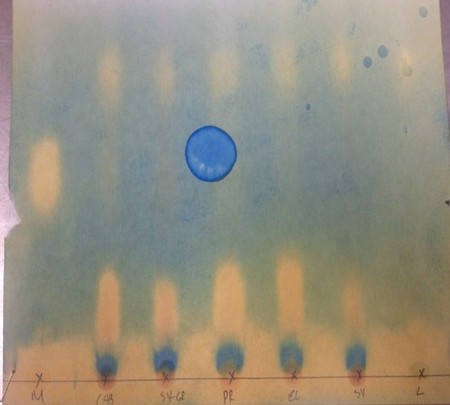
Never mind the big drop of DAP there in the middle, I got a bit too excited. Looks like the Estate Grenache, Block 6 Syrah, and maybe the Glen Rose Syrah are ready to go. Yeah, that’s the stuff of award winning blogging eh?
So instead, I’d like to talk a little about something else happening right now that has a massive impact on wine quality for 2011. We started pruning the vines last week. The way a vine is pruned is the first step you take in influencing the fruit of the next vintage. Pruning basically outlines how much fruit we want each vine to produce, while also limiting the amount of energy used in vegetative growth. Here is what the now dormant vines look like; this is Malbec in case you were wondering.
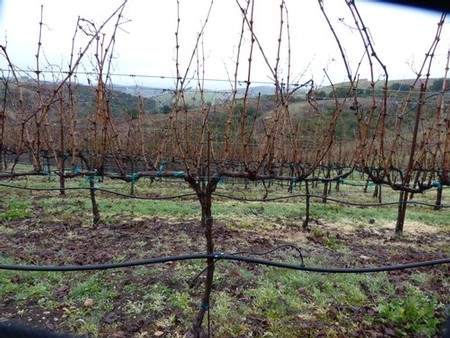
(These vines were planted in 2002! Things grow slowly on limestone.)
Ah, the blank canvas for the pruning shears. It’s time to get to work creating a grape producing masterpiece. Once we are finished, it should look something like this.
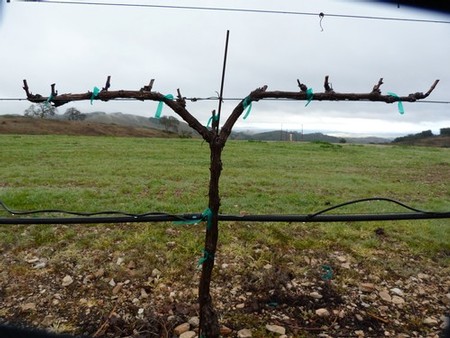
Well, sure, it looks like we hacked away at the thing to leave a vine with a bunch of little stubs. But there is quite a bit of thinking that goes into this. The first time I had to prune I was worthless. I stared, measured, counted my fingers, talked to the vine, everything to make the perfect prune. I was slow to the point of just being in the way. And to top it off, even with all my science and thinking, I was still making bad decisions. After a couple of hours though, the Zen of pruning begins to set in. The points where it is best to clip start to organically appear to you. I’m still no Edward Scissorhands like our vineyard manager Martin, but I can hold my own now.
For the home ranch, we use a cordon training system. The central vertical trunk splits into two permanent horizontal parts. This horizontal part is called the cordon. On the above photo, there are 5 nubs on each side of the cordon. Those nubs are the permanent spur positions, the locations where we will allow the yearly vegetative shoot growth.
Here is a close up shot of a spur position before pruning.
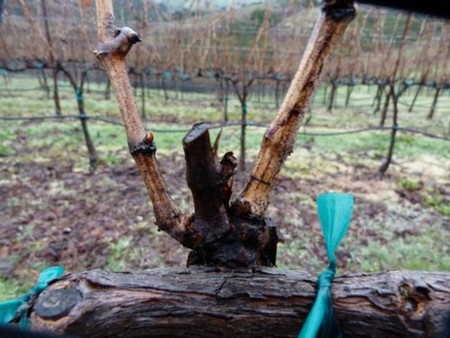
As you can see, two shoots grew from the spur position. This is our first and foremost form of growth control. We want to limit things to 10 Spur positions per vine, thus 20 shoots per vine. And since each shoot will typically only produce two clusters per shoot, we would have 40 clusters per vine in a perfect world. You never get that much fruit, but if left untended until harvest, that would be your max. It makes the fruit dropping that takes place at veraison much easier when pruned like this.
So how do you get the nice perfect two shoots of growth from each spur, well here is a handy photo to demonstrate.
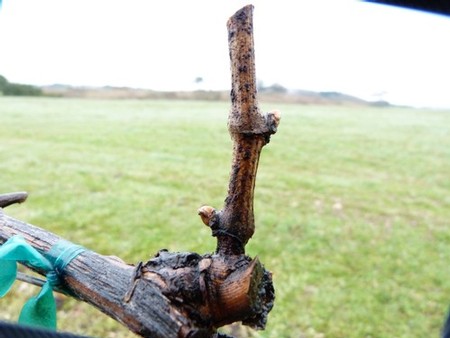
This is not an ideal spur here. The buds, the two white bumps, are too far from the cordon for my liking. But this photo nicely demonstrates the two buds per spur position pruning goal. Ideally, your buds will be really close to the cordon so that each year, the spur becomes a nice tight knot on the cordon. If you see a vine with spurs that are growing way away from the cordon, you got some lazy pruners, possible poor growth, and some angry grape pickers during harvest.
Here is what happens when you let your wine maker learn pruning the previous year.
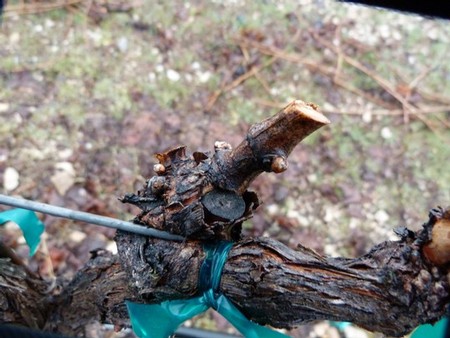
An ugly mess with buds all over the place. Now we will have to come back after bud break and knock off all the excess shoot growth. I let Martin handle this one this year, and he already did a great job of getting it under control. After pruning next year, that spur position will be beautiful.
In my humble opinion it can not be overstated how important vineyard practices like pruning are in determining the final product, the wine. With each cut, we are impacting how the vine will grow, how it will produce fruit, and how healthy it will be. It is a common throw away line in wine maker bios about how “the best wine is made in the vineyard”. This is what is meant by that. Pruning is a back breaking, hand killing endeavor that needs to be carried out as carefully as any sorting, punch down or pressing that happens during harvest. When done correctly with proper care, the foundation for great wine is laid.